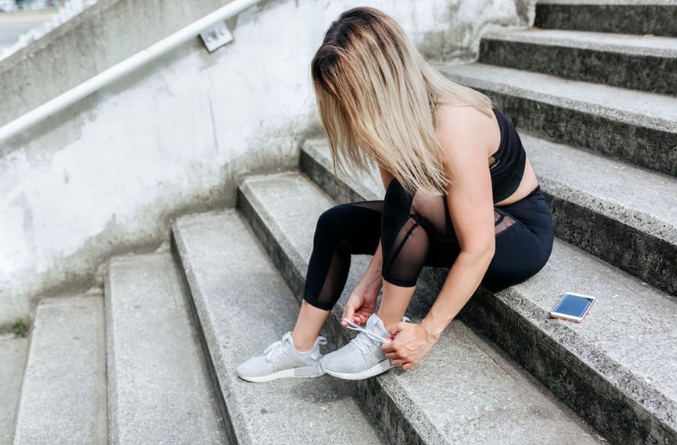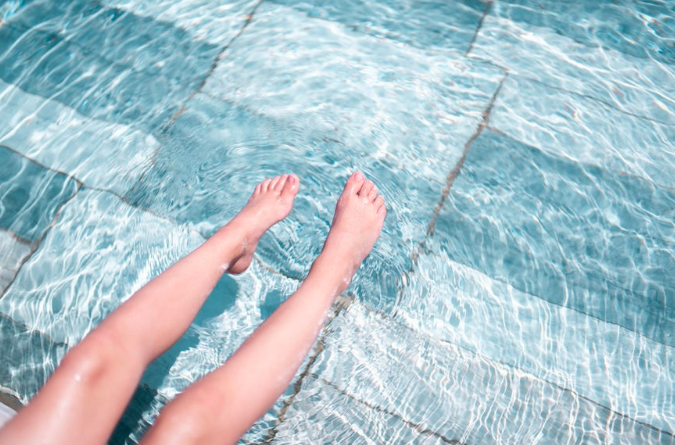Well+Good "Feet Week" Features Dr. Ragland's Advice on "How to Banish *All* the Foot Problems"!
Photo: Stocksy/Lyuba Burakova via Well+Good
ERIN BUNCH, AUGUST 3, 2018
Few things are worse, IMO, than when someone asks you to remove your shoes upon entering their house. Whether your toes are deformed from a childhood spent in pointe shoes or your nails are just in need of a paint job there are, in my mind, few (if any) commonly-exposed body parts so cringe-worthy as those located south of your ankles.
All sorts of things can go wrong with your southernmost appendages, especially given their frequent use in a variety of circumstances...Yolanda Ragland, DPM, podiatrist, foot surgeon, and owner of Fix Your Feet, shares intel on some of the most common issues with which patients step into her practice, including remedies so you no longer have to run away when someone asks you to go sans shoes. (Or is that just me?)
Keep reading for everything you need to know in order to put your best foot forward.
Photo: Stocksy/Marco Govel via Well+Good
Athlete’s foot
“There are two types of people when it comes to contracting athlete’s foot,” explains Dr. Ragland. “People who are susceptible to developing the infection, and those who are not.” In other words, if you have been a sufferer of athlete’s Foot in the past, it’s likely the fungus will recur in the future.
For this reason, prevention is key. “Wearing clean, wick-absorbing socks, or footies, helps to discourage fungal growth, says Dr. Ragland. “Using anti-fungal creams, gels, sprays, or powders, daily, will also significantly reduce repeat-infection rate.” ...
Bunions
I don’t know about you, but I actually had no idea what a bunion was until I looked into it for this story. “A bunion is a bony prominence of the big toe joint,” Dr. Ragland explains. “The long bone connected to the base of the toe, called a ‘metatarsal’, is in poor alignment and protrudes outward, forming a bump, while the big toe rotates inwardly pushing up against the second toe.” ... Dr. Ragland also points out that the condition can “ruin” shoes, which is another reason to opt in on surgery. (I’ll say!)
Calluses
Calluses, while ugly and sometimes painful, are actually trying to do a good thing for your foot. “They’re formed as a protective armor for the skin, so it does not break down,” says Dr. Ragland. “Non-painful calluses on a healthy foot do not need any treatment; however, a thick callus can be painful to walk on, much like having a pebble stuck to the skin.”
If yours bugs you, Ragland says you can treat it by removing the top layer of thickened skin. One way in which this is done is likely familiar if you’re a fan of regular pedicures—using a pumice stone or an emery board, you can (slowly and gently) grind down the hardened skin. A second method, which uses a blade-type instrument (e.g. a razor) to cut or shave the affected skin, should only be attempted after consulting a podiatrist. A third utilizes an acid-based agent—generally a urea-based salve or salicylic acid treatment—to slough the tough skin down. This too, should only be tried in consult with your doctor. The final option, says Ragland, is complete excision. “The callus can be fully removed along with the normal, underlying skin and closed with stitches,” she says. “This procedure can be performed in the office by your podiatrist, but is reserved for extreme cases and is rarely recommended because the scar from the excision can be just as painful as the callus.”
In some populations, calluses can lead to more serious conditions than a temporary limp. “Patients that are immunocompromised, like diabetics, are at risk of ulceration in the areas where once the callus could form, but due to a weakened immune system can no longer do so,” says Dr. Ragland. “This skin becomes friable and ulcerates, now increasing risk for infection which could ultimately lead to amputations if not treated immediately.”...
Photo: Stocksy/Lea Csontos via Well+Good
Smelly feet
...Dr. Ragland says that astringents, which cause contraction of the skin, can help to close pores and block sweat glands, thereby eliminating unpleasant scents. “Homeopathic, astringent-based remedies include Hydrofluoricum Acidum, Silicea, and Witch Hazel,” she says. (A foot bath can help, too.)
If this is a chronic issue for you, you may also want to investigate the cause of excessive sweating, advises Dr. Ragland, “Hyperhidrosis [excessive sweating] can be linked to anxiety, excessive coffee drinking, consumption of alcohol, neurological conditions, diseases like diabetes, hormone changes, hyperthyroidism, tumors, infections and even mercury poisoning,” she explains.
With those underlying issues cleared, you should consult your podiatrist about medical intervention if you’ve exhausted the conservative therapies listed above (along with the patience of your loved ones). “While these are more invasive or pharmaceutical, these are longer-lasting and have proven to be extremely effective,” she explains.
Detached toenail
...Most often, toenail loss results from injury, fungal infection, or psoriasis, says Dr. Ragland. “Psoriasis causes changes in the nails which may result in a dry brittle nail causing the nail to left from the nail bed and eventually fall from its attachment to the skin,” she explains. More rarely, chemicals, medications, and serious illness can be contributing factors as well. “Illnesses like cancer that require chemotherapy to attack fast-growing cells can result in toenail disfigurement or loss,” Dr. Ragland says.
Big thank you to Erin Bunch and Well+Good for including Dr. Ragland and Fix Your Feet in "Feet Week"! Read the full story on Well+Good, follow Bunch's stories, and stay up with the latest at Well+Good.



